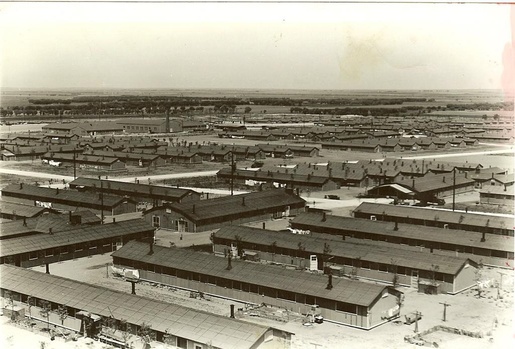

Japanese American History from Early Immigration to Present Time
 nicolemyoung
nicolemyoung
|

|
||
| Licensing | ||
Incarceration: Department of Justice (DOJ) and War Relocation Authority (WRA) Camps
April-May 1942- Beginning in early April, the Immigration and Naturalization Service rounded up those Latin Americans who were of Japanese descent and transported them to American internment camps run by the Department of Justice. There were 27 U.S. Department of Justice Camps, eight of which in Texas, Idaho, North Dakota, New Mexico, and Montana held Japanese Americans. The camps were guarded by Border Patrol agents rather than military police and was also intended for non-citizens including Buddhist ministers, Japanese language instructors, newspaper workers, and other community leaders living in the U.S. at the time. Over 7,000 Japanese Americans and Japanese from Latin America were held at these DOJ camps during World War II.
May 8th 1942- The first "volunteers" arrived at Poston, Arizona, one of ten WRA run "relocation centers" which housed Japanese Americans during the war years. Through the rest of the summer, Japanese Americans were transferred from the "assembly centers" to Manzanar and Tule Lake, California; Amache, Colorado; Minidoka, Idaho; Topaz, Utah; Heart Mountain, Wyoming; Rohwer and Jerome, Arkansas; and Gila River and Poston, Arizona.
General information about the 10 concentration camps:
· All of the camps were opened and running between the months of May and October of 1942 and they were all closed by March 1946.
· Each camp held anywhere between 7,000-18,000 people, for a total of 120,000 Japanese Americans who were incarcerated in the WRA camps.
· Most of the camps were in locations with extreme weather conditions ranging from unbearable heat in the summer months to temperatures below freezing in the winter months.
· All camps also shared similar housing units known as barracks. These barracks were built very quickly and without much concern for how they would hold up in extreme weather conditions. The barracks also provided very limited living space and were sectioned off into “apartments” which measured, at the largest, about twenty by twenty-four feet each.
· Each camp held people from different areas of the west coast, and
Differences between camps:
· Out of all 10 camps, only Tule Lake was different in that it was not only a “relocation center” but was also a segregation center.
Based on this original

|
Amache buildings |
 Japanese American History from Early Immigration to Present Time
Japanese American History from Early Immigration to Present Time
 Journal feed
Journal feed
